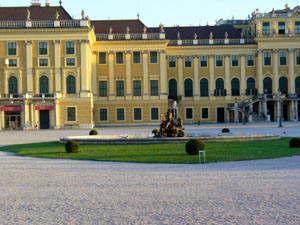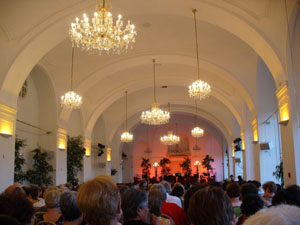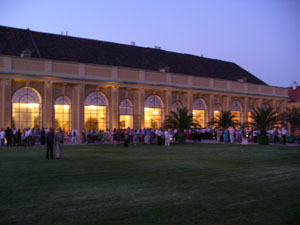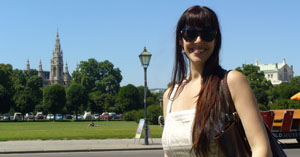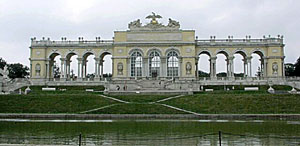
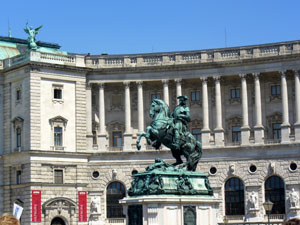
In front of the Hofburg Palace rears a bronze statue of Prince Eugene. Prince Eugene was considered an important advisor to Emperors Leopold I, Joseph I and Karl VI, as well as being one of the most important building patrons of the Baroque period. The equestrian statue was erected in 1865 by A. D. von Fernkorn.
Schönbrunn was the Versailles of the Austrian Empire. It was built at the end of the seventeenth century and, according to the legend, Emperor Mathias II found a spring of crystal clear water that he called schoner Brunnen or “lovely spring”. After this he commissioned Johann Fischer von Erlach to design the palace and construction began in 1696.
I attended a Mozart concert inside Schönbrunn Palace where, in 1786, a young and ambitious Mozart engaged in a musical duel with his rival Salieri. This is also where six year old Mozart performed for the Empress and became known as a musical prodigy.
|
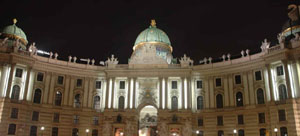
The Hofburg was the center of the incredible Hapsburg Empire for over six hundred years. It was also the main residence of the imperial family. Emperor Franz Joseph I and Empress Elisabeth of Austria redecorated the palace and almost every rooms has creamy-white walls with a gilded ceiling and parquet floors..
Wine on the courtyard The Orangerie Schönbrunn after the concert.
Behind me, cathedral spires pierce a beautiful July sky.
The Gloriette Monument is, as its name suggests, pretty glorious. A striking yellow in honor of the Empress’ favorite color, it is part of Schönbrunn palace. From its room the Empress could overlook all of Vienna. |
|
